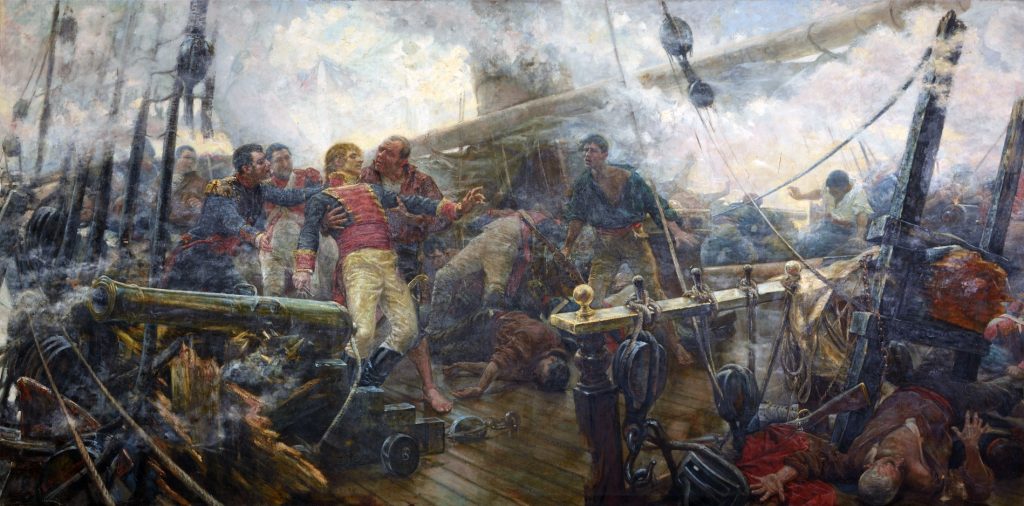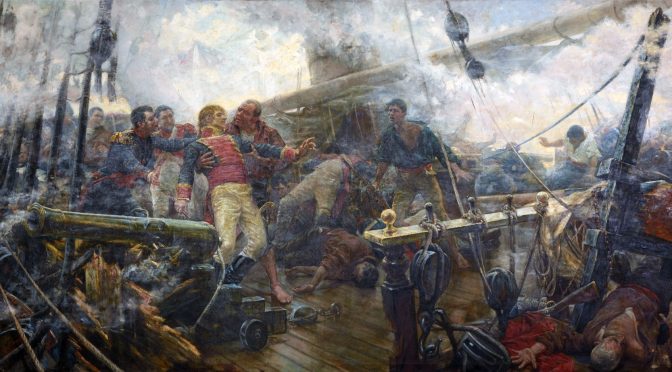The late 1700s were a turbulent time for Europe, with the United States declaring independence and Napoleon trying to conquer the continent. It was also a time in which scientific enlightenment was crescendoing, leading to many people having both distinguished military and political careers as well as making important contributions to science. According to Julio Caro Baroja, Cosme Damián de Churruca, a sailor from Gipuzkoa, symbolized “in a most perfect way the studious and hard-working life of the sailor with scientific affinities.”

- Cosme Damián de Churruca y Elorza was born on September 27, 1761, to Francisco de Churruca and María Teresa de Elorza in Mutriku, Gipuzkoa, very close to where the Bizkaian-Gipuzkoan border hits the Atlantic Ocean. He was born to a noble family and, as the third son, was destined for a life away from home (his eldest brother inherited the family property while the second became a priest). He himself studied to be a priest as well, but during his schooling a passion for the life of a sailor was awakened within him. He wasn’t the first of his family to become a sailor – his ancestor Antonio de Gaztañeta had blazed that trail before him.
- As he studied to become a naval officer, his interest in science and math also grew. In particular, he noted and envied the knowledge of the big sea-faring nations, writing to his father that he wished that he knew English and French since all of the great books were written in those languages and bemoaning the fact that he could not find such books on “arithmetic, geometry, trigonometry, cosmography, geography, astronomy, algebra, tactics, navigation, maneuvering, artillery or drawing” where he was. He later studied algebra, calculus, and mechanics, achieving the top place in his class.
- In 1788, along with Ciriaco de Ceballos, he was sent to the Strait of Magellan to complete mapping the region. They studied sea currents, winds, and the topography of the strait, both for a more basic understanding of the area as well as to enhance the commercial and political benefits of the strait. He was also involved in the completion of the Atlas of North America. Based on the island of Trinidad, he spent three and a half years directing expeditions to map the region.
- In 1805, he married María Dolores Ruiz de Apodaca, niece of Juan Ruiz de Apodaca. Only a few months later, he found him self in the Battle of Trafalgar, part of the combined Spanish and French fleets fighting the British in the War of the Third Coalition of the Napoleonic Wars. This battle, off the southern coast of Spain, was decisive in thwarting Napoleon‘s plans to invade Britain and was one of Britain’s greatest naval victories but cost them the life of Horatio Nelson. Under Churruca’s command, the San Juan Nepomuceno found itself alone in a fight with six British ships. Churruca ordered that the ship’s colors be nailed to the mast, meaning that they would fight to the end. The ship fought admirably, but Churruca took a cannonball to the leg and died. The British displayed his ship in Gibraltar for several years. His enemies so admired his bravery and skill that, when they captured his ship, they demanded that anyone entering his cabin remove their hat, as if he were still alive. His name was emblazoned with gold letters above his cabin.
- During his life, in addition to publishing many cartographic works, he published a manual on military instruction aboard his ship, another on the geometric analysis of the keel of broken ships, and a manual on marksmanship. He served briefly as mayor of Mutriku. In remembrance of their native son, a statue was raised in Mutriku in the late 1800s.
Primary sources: Anduaga Egaña, Aitor. Churruca y Elorza, Cosme Damián de. Enciclopedia Auñamendi. Available at: https://aunamendi.eusko-ikaskuntza.eus/es/churruca-y-elorza-cosme-damian-de/ar-36319/; Cosme Damián de Churruca y Elorza, Wikipedia.
Discover more from Buber's Basque Page
Subscribe to get the latest posts sent to your email.


